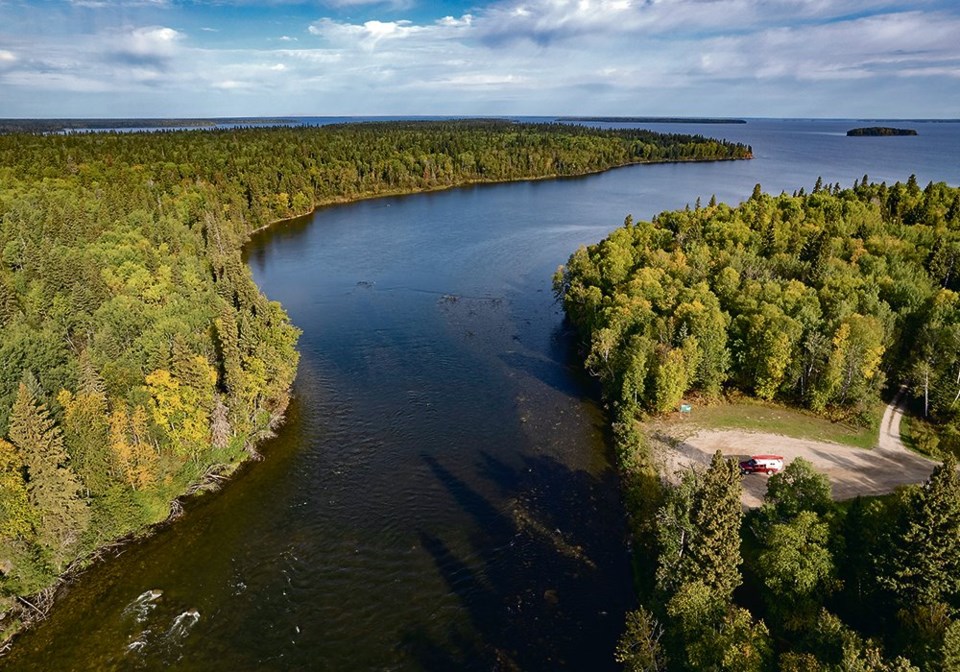AMISK LAKE — Amisk Lake in northeastern Saskatchewan stands out for its varied landscapes and storied history, much of which we can experience on a drive along its eastern shore. Highway 167 starts at the twin communities of Creighton and Flin Flon on the Saskatchewan-Manitoba border and then winds southwest to the resort village of Denare Beach.
A protected bay with myriad islands gives the community a stunning setting. It boasts a sandy beach, picnic grounds, campground, fishing lodges, cottages and shops.
A must-see is the Gateway Museum, featuring the extensive collection of artifacts that amateur archaeologist Harry Moody collected. It showcases everything from local history to geology, the mining boom, fur trade forts, and First Nations embroidery and beadwork.
A highlight is the collection of birchbark bitings by famous local artist Angelique Merasty. In this specialized art form, birchbark is folded and bitten to form intricate designs.
Another stop we usually make is at Precambrian Wild Rice, where they process and sell the north’s most famous agricultural crop. Plant tours are offered, though these were scaled back during COVID-19.
From Denare Beach, the road winds another 30 kilometres through hilly forest to the south end of the lake and the Sturgeon-Weir River. In this short distance, the landscape changes dramatically from hard rock Canadian Shield around Denare Beach to easily eroded and often wildly coloured limestone.
About 15 kilometres south we come to the curious limestone crevices. No signs point the way since this isn’t an official tourist attraction. A minor approach road heads east a few metres to the remains of a cement structure that was once a fire tower base. From here, informal trails lead to the labyrinth of limestone crevices, caverns, and chasms.
They originated some 450 million years ago when coral reefs in a warm sea were transformed into limestone layers, where they were then subjected over centuries to repeated freezing and thawing. Some drops are up to 12 metres straight down.
Even in mid-summer we might see snow or ice at the bottom. Some walls are so straight that it’s easy to imagine that they were cut by some gigantic machine.
Just south of the crevices we come to the Meridian Creek picnic site, and shortly after that the road curves west along the south shore of the lake. Facilities are low-key, with the small but beautifully situated Sandy Beach campground and T&D Amisk Camp fishing lodge.
The road ends abruptly on the banks of the Sturgeon-Weir River where the historic waterway continues its course south from Amisk Lake. While this seems like a strange place to end a road, it was built with grander plans in mind.
Mining was booming in the Creighton and Flin Flon area, but there was no road connection to the south. During the 1930s and 1940s, road construction proceeded slowly as far south as the Sturgeon-Weir River, intending to meet up with a road being built north of Nipawin. Construction challenges in this rugged country caused the government to rethink the plan.
The completion of Manitoba’s Highway 10 to Flin Flon in 1951 effectively killed the project. A Saskatchewan route would have to wait for the opening of the Hanson Lake Road in 1965.
Our favourite spot is the picnic site at Limestone Point on the lakeshore, just north of the road’s end. It sits on a pancake-flat limestone slab that resembles a paved patio.
Just across the bay was the site of Saskatchewan’s first gold rush in the early 1900s when a discovery was made by Tom Creighton. A community known as Beaver City sprang up but was short-lived since most mining activities soon moved to Flin Flon.
The history of the Sturgeon-Weir River, of which Amisk Lake is a part, goes back to the fur trade when it was a crucial connector between the Saskatchewan and Churchill River systems. As part of the old voyageur highway, countless traders and every prominent explorer from Peter Pond to Alexander Mackenzie and John Franklin passed through. Limestone Point was said to be a favourite spot for those early travellers to rest. So, if you have a picnic lunch here, you’ll be in some pretty famous company.
Arlene and Robin Karpan are well-travelled writers based in Saskatoon. Contact: [email protected].




